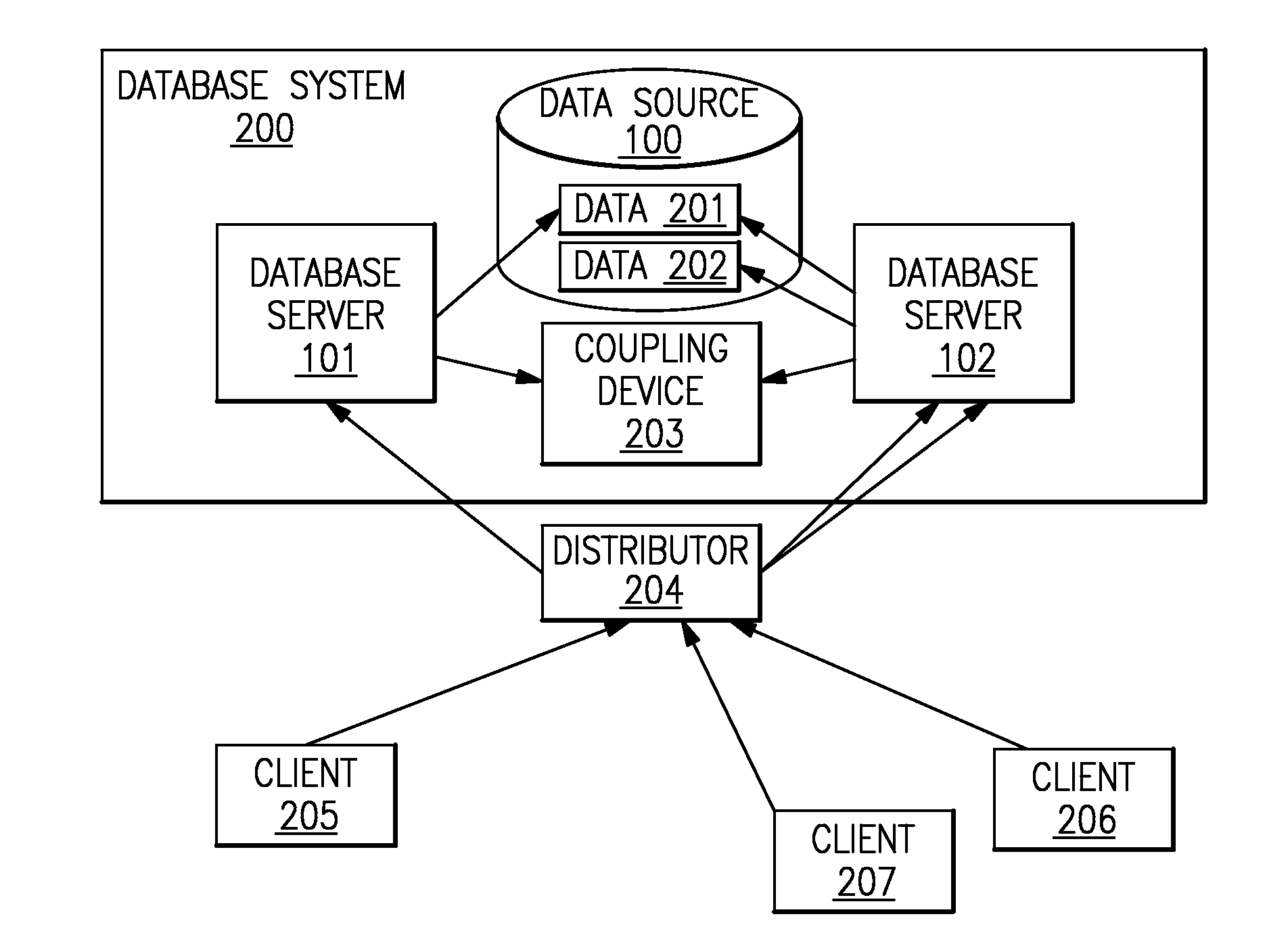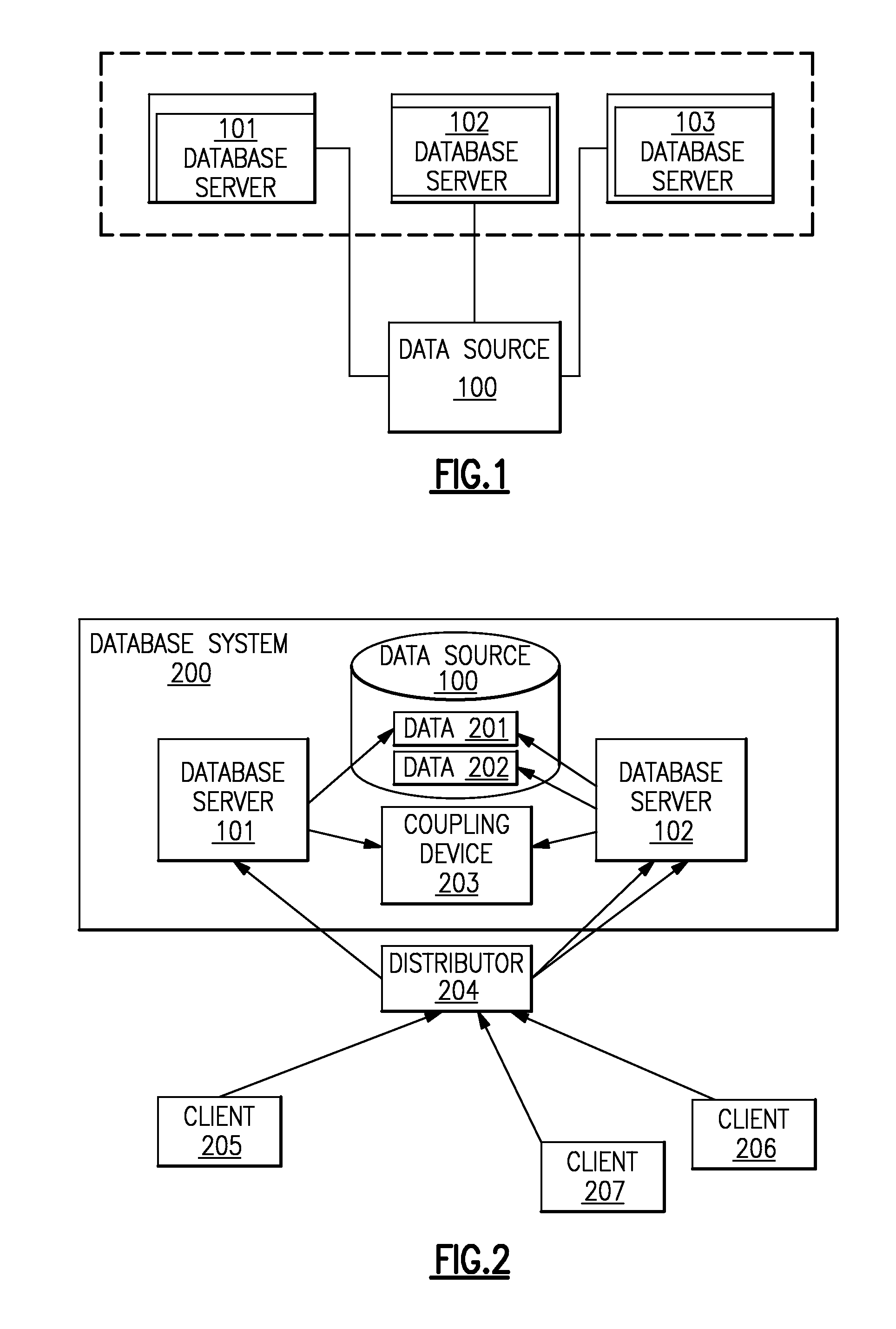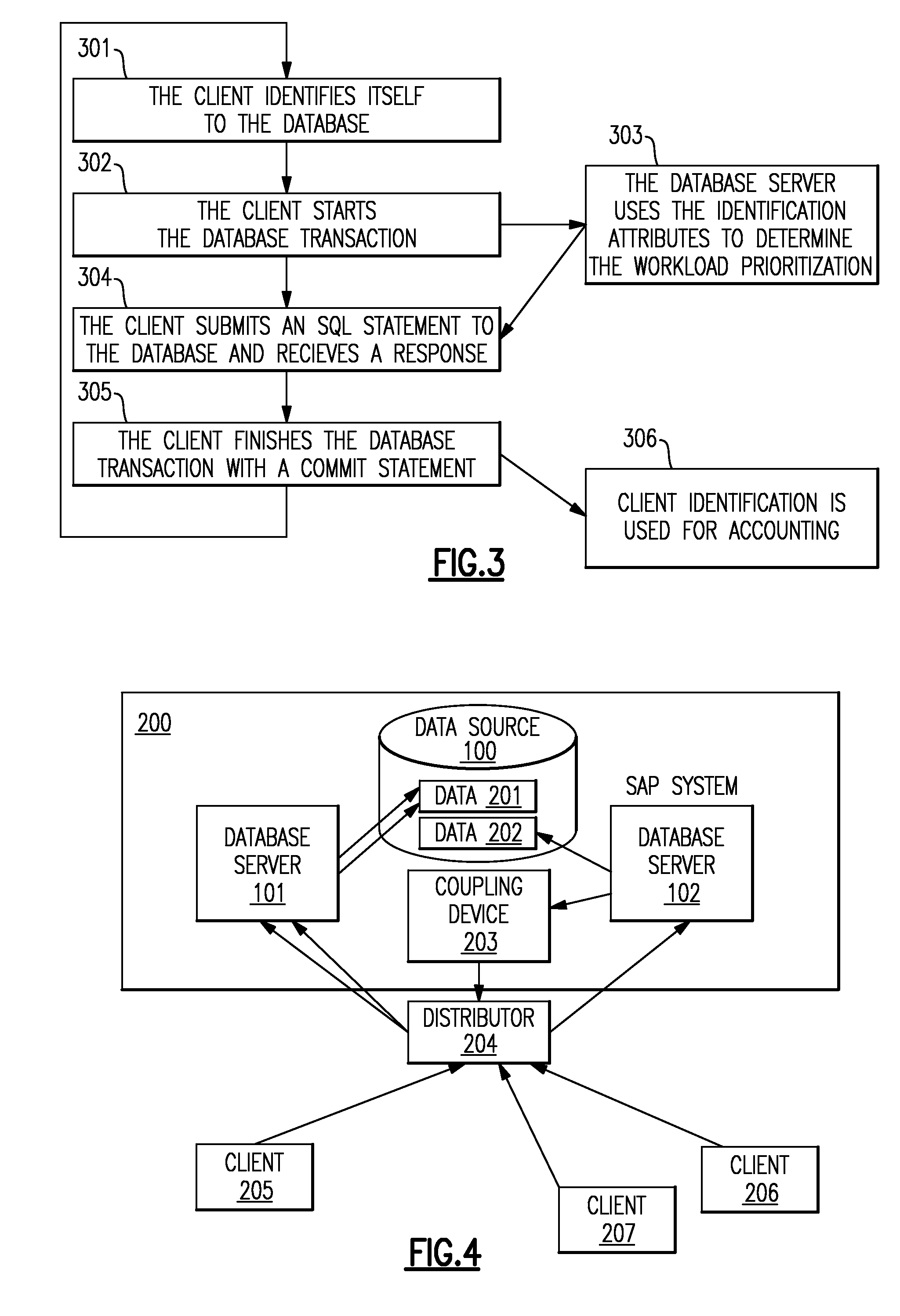Method and System for Minimizing Synchronization Efforts of Parallel Database Systems
a database system and synchronization effort technology, applied in the field of minimizing synchronization efforts of parallel database systems, can solve problems such as contention, problems such as problems, and one of the updates could potentially be lost, and achieve the effect of increasing overhead
- Summary
- Abstract
- Description
- Claims
- Application Information
AI Technical Summary
Benefits of technology
Problems solved by technology
Method used
Image
Examples
Embodiment Construction
[0030]Referring now to FIG. 1, a simplified set-up of a parallel database system is shown. The database servers 101, 102, 103 are all connected to one data source 100. Clients seeking access to data in the data source do so via one of the database servers 101, 102 or 103.
[0031]FIG. 2 illustrates a state of the art parallel database system 200. The system comprises two database servers 101 and 102. Both database servers 101 and 102 are connected to a data source 100. Also illustrated are clients 205, 206 and 207. Clients 205, 206 and 207 seek access to the data source 100. Clients 205, 206 and 207 need to identify themselves with the distributor 204 in order to get access to the data source 100. The distributor 204 allocates clients 205, 206 and 207 to the different database servers based on the current utilization of the database servers. The distributor 204 may also be part of the database servers and may propagate information about the utilization of the database servers to the cl...
PUM
 Login to View More
Login to View More Abstract
Description
Claims
Application Information
 Login to View More
Login to View More - R&D
- Intellectual Property
- Life Sciences
- Materials
- Tech Scout
- Unparalleled Data Quality
- Higher Quality Content
- 60% Fewer Hallucinations
Browse by: Latest US Patents, China's latest patents, Technical Efficacy Thesaurus, Application Domain, Technology Topic, Popular Technical Reports.
© 2025 PatSnap. All rights reserved.Legal|Privacy policy|Modern Slavery Act Transparency Statement|Sitemap|About US| Contact US: help@patsnap.com



